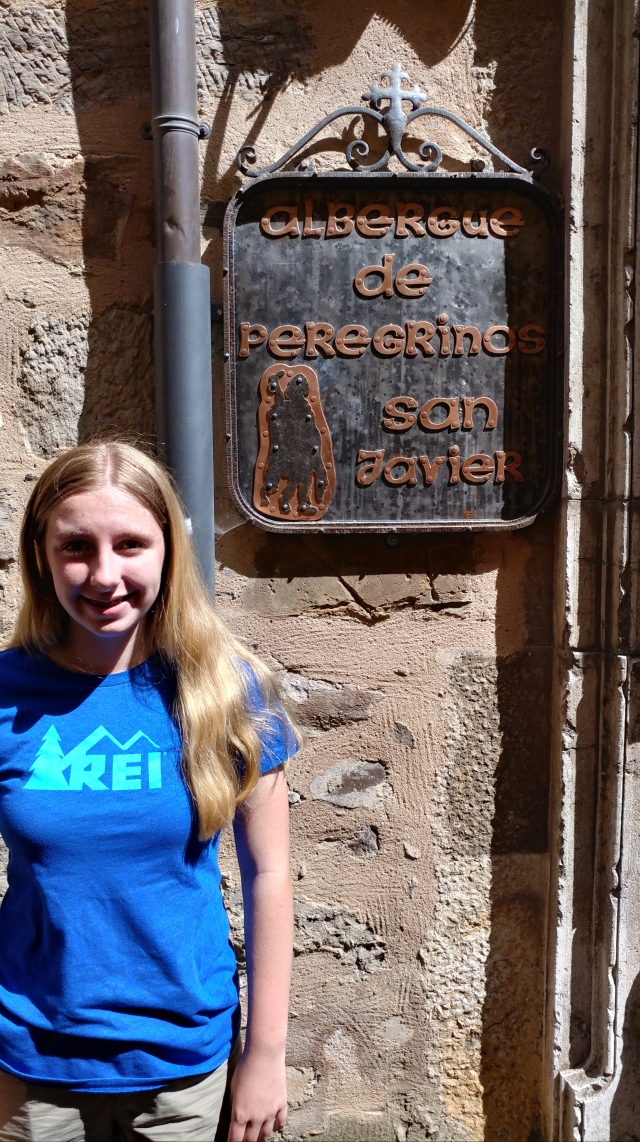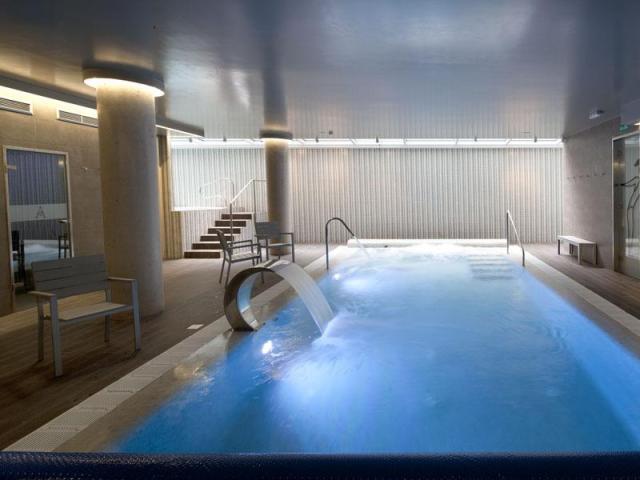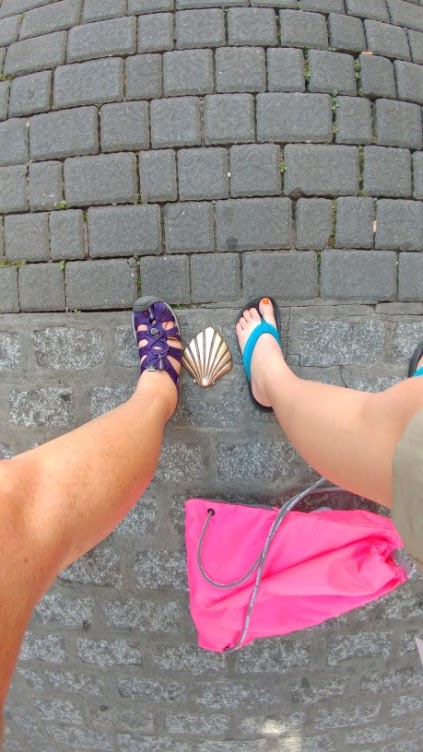We arrived at the deserted Astorga, Spain train station around noon, during a heat wave so hot and uncomfortable that it was widely referred to in Europe as ‘Lucifer’. Carrying all our worldly possessions on our back, we were full of excitement to start our pilgrimage to the Camino de Santiago the next morning.
Although everyone told me I wouldn’t get lost on the Camino I was soon skeptical. After exiting the train station, I really did not know how to get to our hotel, just that it was a block or two from the Camino and the Cathedral. Somehow, I thought I would just know how to get there but this was not the case.
Since I didn’t want my 12-year old to know I was feeling disoriented and had no idea where the Camino was actually situated, I needed to get my act together. Luckily, I did have cell service and was able to google and find directions that were only 5 minutes away. But as we trudged up the steep road I then realized the Google estimate was for driving not walking. For the next 2 plus weeks, the only directions or times I would need from google would be the walking instructions.
The Camino’s path is marked with yellow arrows and scallop shells all directing you towards Santiago. We started seeing the arrows and we finally found our hotel across from the Cathedral and right off of the Camino.
Astorga is a beautiful town with lots to see and do. Hotel Spa Cuidad de Astorga was chosen as our hotel because it had a pool and spa. I wanted my child to enjoy her time here in Spain, thus the pool, but I really needed to recover from the jet lag, so the steam and sauna were for me. The hotel was quirky, modern, centrally located, and the staff was extremely helpful. They are used to pilgrims and their needs, and it shows. Our room was air conditioned but little did I know that would be one of the last air conditioned anything I would see for a couple of weeks.
We ditched our backpacks and went downstairs to the Spa. We had the entire place to ourselves as there wasn’t even an attendant there and thoroughly enjoyed the pool, hot tub, sauna, steam and Turkish baths. They have plush towels and drinks set out for those using the facilities. Although it is in the hotel’s basement, it had large windows and skylights, so beautiful light streamed in and it never felt closed-in nor claustrophobic.
We then set out to obtain our first pilgrim passport stamp in Astorga from the nearest albergue. An albergue is an inexpensive place where pilgrims sleep while on pilgrimage in Spain, that is owned by the local government or the Catholic Church. Since most albergues are co-ed I decided that it was best that my child and I stay in private rooms or moderately priced hotels along the way.
The pilgrim’s passport inscribed with your name is available through organizations such as American Pilgrims on the Camino ( APOC). Just like an official travel passport receives stamps from different countries, this passport receives a unique stamp from the businesses along the Camino. This passport entitles pilgrims to pilgrim’s meals and lodging at a substantially discounted rate along the way. Once you complete the Camino, the passport will be your proof at the Pilgrim’s Reception Office in Santiago that you walked the required stages of the Camino. After examining your passport, with its many different stamps and dates, the Pilgrim’s Reception officials will issue you a Compostela if you have completed the necessary requirements.
Here is a link to the Pilgrim’s Reception Office:
We then walked to the Albergue de Peregrinos San Javier to have our passport stamped. Once inside we realized how hot these albergues can be. There were no apparent fans and the place was stifling. We saw several pilgrims lying on their cots totally exhausted from the long day’s hike. Alarmed is an understatement of how I felt at that moment. What was I doing bringing my 12-year-old to Spain alone to walk 270 kilometers during the summer? Was I crazy? I would soon find out.
We then visited magnificent Astorga Cathedral, which began construction in the 15th century but not completed until the 18th. Adjacent to the Cathedral is the Episcopal Palace a beautiful castle designed by the incomparable architect Antonin Gaudi at the turn of the 20th century and which houses a museum devoted to pilgrims. This town, with a population of only 11, 000, has both a palace, a cathedral and the Camino trail running through the town center. Amazing sightseeing opportunities everywhere in this village.
Within blocks of the Cathedral are plenty of shops serving pilgrims needs such as hiking gear, scallop shells and sun hats. After some last-minute shopping, we remained in the plaza just pilgrim watching. I was just so jealous of their look, which was part strength and confidence, and part shabby and dusty. They appeared exhausted to me and I could not wait for the next morning to become part of this group; those that were willing to give up their comfortable lives back home to walk across NW Spain.
Our plan for the following day was to rise before dawn to start out at 5:30 am when it was still reasonably cool and to begin our Camino.
Buen Camino.
Click here to follow our journey




